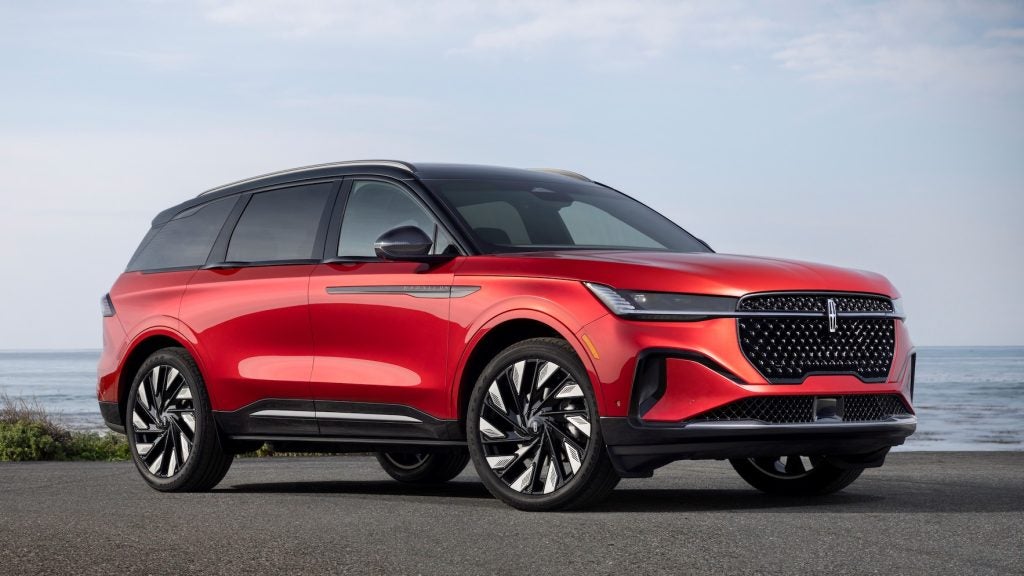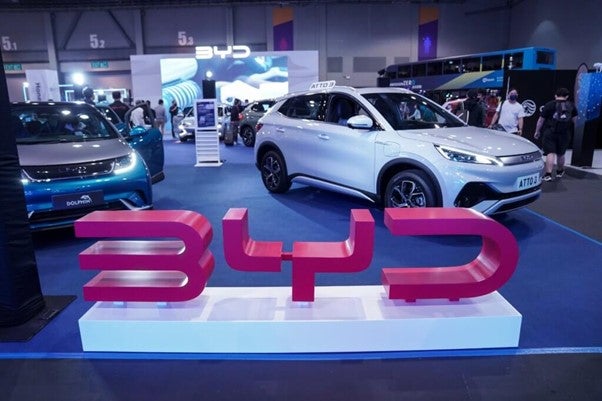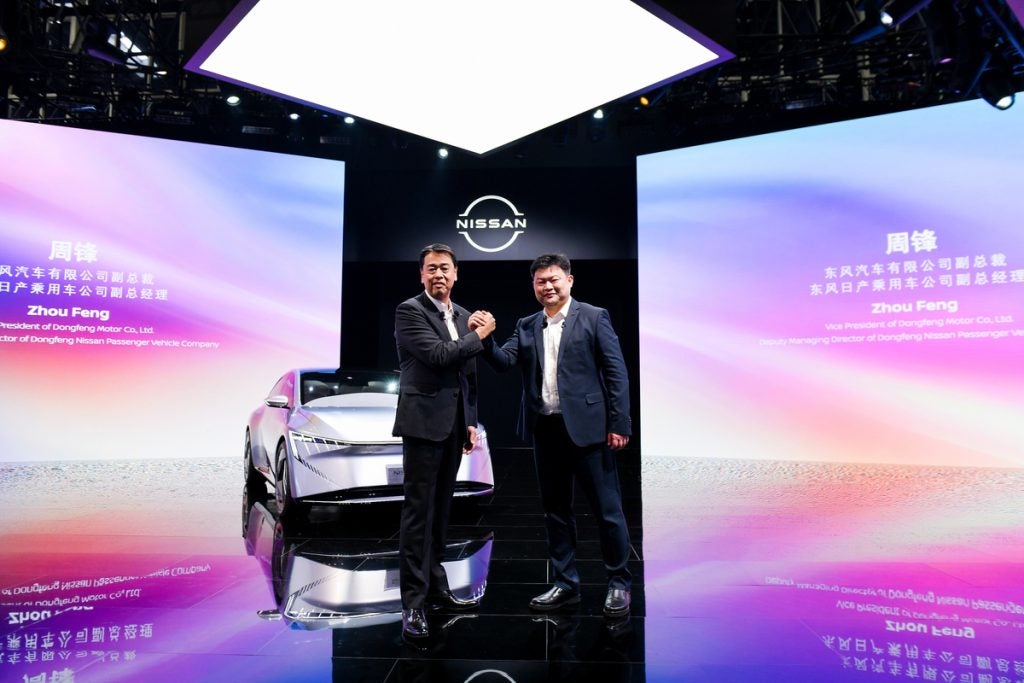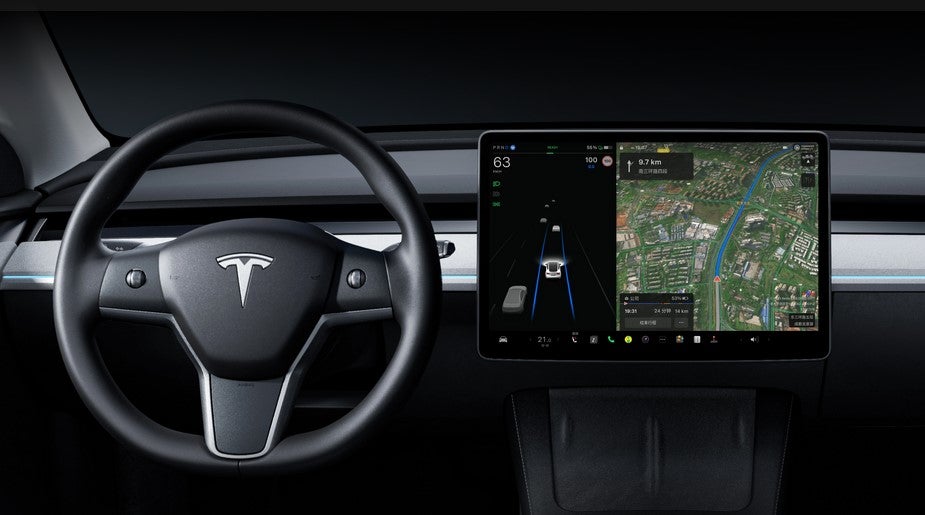 China continues to present a big challenge to Western companies attracted to its massive, but largely unrealised, market potential. In the auto industry, there have been some notable inward investment failures, but the general take is that positioning in China makes sense for the future. Foreign direct investment continues to grow. This article, provided by www.emotionreports.net (the online presence of eMOTION! MAGAZINE), considers the broader issues surrounding investment in China and the industrial landscape, with particular reference to the auto industry.
China continues to present a big challenge to Western companies attracted to its massive, but largely unrealised, market potential. In the auto industry, there have been some notable inward investment failures, but the general take is that positioning in China makes sense for the future. Foreign direct investment continues to grow. This article, provided by www.emotionreports.net (the online presence of eMOTION! MAGAZINE), considers the broader issues surrounding investment in China and the industrial landscape, with particular reference to the auto industry.
As the U.S. Congress wrangled day after day about whether to admit China into the World Trade Organization, miles of new pavement were being laid for a highway between Beijing and Shanghai.
At the same time, droves of Taiwanese business people flooded the streets of mainland cities, apparently oblivious to the near war that transpired four years ago between China and its expatriate one-time province.
Money has been pouring into China during the past few years at a nearly immeasurable rate, from multinational auto companies and suppliers setting up joint ventures to quiet infusions of Taiwanese investment capital.
China, say those who are participating in its rush to join the 21st Century, is a country that no longer can be ignored by anyone.
 |
China is still waiting to join WTO |
Ignoring its Past?
How well do you really know your competitors?
Access the most comprehensive Company Profiles on the market, powered by GlobalData. Save hours of research. Gain competitive edge.

Thank you!
Your download email will arrive shortly
Not ready to buy yet? Download a free sample
We are confident about the unique quality of our Company Profiles. However, we want you to make the most beneficial decision for your business, so we offer a free sample that you can download by submitting the below form
By GlobalDataTo Western eyes, China on the brink of tomorrow doesn’t appear to be looking back as its ancient cities and traditions make room for a booming future. And for outsiders, it’s become a brass ring prize for those wanting a foothold in what assuredly will become the world’s most dominant economies within a decade or two.
The World Trade Organization (WTO) approval for China last year, despite heavy lobbying from opponents, won a sigh of relief from some of America’s top executives who had counted on China receiving coveted Permanent Normalized Trade Relationship (PNTR) status.
Now, as that approval waits to be implemented, those same executives say they are freer to go on the offensive for business in a country that is fast-forwarding from a sort of economic dark ages towards a spot as the new jewel of the Orient.
But as western influences hammer on the door of China for admission, the centuries-old mist that shrouds what’s undoubtedly the world’s most enigmatic country isn’t likely to disappear at any time soon.
Surface Appearances
“It’s true China can change, and it has been changing. But I wouldn’t underestimate the forces that resist change,” said Greg Mastel, economist and author with two books to his credit about the Chinese economy.
Mastel directs the global economic policy project for the New America Foundation, a three-year-old Washington, D.C. think tank sometimes referred to as “radical central.” With some 13 trips to China behind him (the latest in 1999), he personally has concluded that extending trade recognition to China is the correct way to go – but with caution.
“I supported the PNTR,” said Mastel. “But I think it’s going to be a very, very difficult transition. China is not a natural fit for the WTO. It will take many, many years – maybe decades.”
“China – a country that is fast-forwarding from a sort of economic dark ages towards a spot as the new jewel of the Orient.“ |
Although WTO status is to phase down import tariffs, particularly on motor vehicles, from a high of nearly 100 percent to a more reasonable 25 percent, Mastel feels that rate still is excessively high and will keep imported goods out of the reach of most Chinese.
“There could be some imports of parts or materials, but I don’t think we’re going to see freighter after freighter filled with U.S. automobiles going to China,” he said.
Reconciling Differences
The real challenge, said Mastel is how to reconcile China’s version of trade and industrial policy with the rest of the world, as the emerging nation seeks to shelter its own self interests while WTO policy mandates call for a much more liberal trading partner.
A major interest for the Chinese is gaining expertise in the manufacture of vehicles needed to move goods and people around the country. China has pursued the auto industry vigorously for a quarter century, with most companies that now are doing business there manufacturing locally for the Chinese market, said Mastel.
But history has a littered trail of trade violations when China felt it was not in its best interest to keep them, he added. “‘Actual contracted investment’ in China really is a deceptive term. It means what’s promised has not always emerged.”
And American companies have felt the sting of losing proprietary rights, and of violations of trademarks such as the copying of hood ornaments or vehicle body designs by the Chinese to whom the concept of one person or corporation owning an idea seems foreign.
“It’s been a big problem for Western companies operating there,” said Mastel. “There are all kinds of horror stories heard throughout the year.”
Rightful Ownership
One infamous example was reported in 1995 when Bob Lutz, then president of Chrysler Corp. prior to its merger with Mercedes-Benz, saw a Jeep Cherokee in China but later learned it was a knock-off with Jeep-like panels on old running gear.
So why are multinational corporations willing to risk the loss of trade secrets and designs to gain access to China?
Part of the answer is in hoped-for reforms in China that major industry players recognize must be made if the country is to move out of its tenuous economic past. That is the job weighing heavily on China’s Premiere, Zhu Ronji.
“He is a very courageous person,” said Vaughn Koshkarian, president of Ford Motor Company’s Asia Pacific operations. “He has a huge and heavy responsibility instituting the absolutely necessary reforms of the state-owned enterprises, while at the same time designing a social security type of system that addresses the social consequences of doing that…
“I think he sees it as a necessity and as an encouragement in achieving what China must ultimately achieve. And that’s competitiveness on a global scale.”
“Ford, like its automotive rivals, is eyeing the emergence of China as a major trading partner“ |
Building from Within
During the five years of economic depression in the Asia Pacific, China maintained its economic growth by improving its infrastructure, said Koshkarian.
“It kind of allowed them to weather the economic crisis by pouring more money into infrastructure which they needed anyway.”
And Ford, like its automotive rivals, is eyeing the emergence of China as a major trading partner as a mother lode of opportunity not only within that country but as a launch pad for other points East. Part of the advantage of more business is the ability to use those resources, such as engineering centers in China, for products throughout Asia, he said.
China currently has an annual automotive market – mostly trucks for delivering goods – of about 100,000 units, with all auto makers competing for their share of the slim 20,000 brought in from outside.
“If the market were to grow to 2.5 million units – and that’s not unrealistic in the next six to seven years – and (imports rise) to four percent, the 20,000 roughly that’s there now could grow to 100,000,” said Bill Kelly, who heads international governmental affairs at Ford.
A Ready Market?
Delphi Automotive, spun off two years ago from General Motors Corporation, is a relative newcomer to China, only there since 1994 according to Marcus Chao, a China native and American citizen who is president of Delphi’s China operations based in Beijing. Before WTO, such low profit, high volume parts manufacturers remained constrained by high tariffs on imported vehicle components not practical at the present time to make in China.
 |
China’s Premiere Zhu Ronji wants to make reforms, and move the country out of its tenuous past |
“Sooner is better than later,” for having the WTO, said Chao from his office in Beijing.
“There are going to be a lot of challenges for (Delphi) but at the same time a lot of opportunities…I have to compete with all the global suppliers in China (with 100 different auto companies and more than 1,000 suppliers) and also overseas…
“Our leaders in the corporation feel this is a growing market and the future of the automotive industry. There is a lot of prospective business here. Delphi has about 15 ventures in China and our total investment is about 400 million U.S. dollars in China.”
The company has more than two dozen technology agreements with Chinese joint venture partners, he added.
Industrial Checklist
Chao cited five “guiding principles” for Delphi setting up a base in China, including long-term commitment, bringing in advanced technology instead of older technology sometimes dumped there by other companies, and localizing manufacturing with training and better access to materials. In addition, Delphi’s worldwide presence should help China establish a trading foothold in other countries and build a customer base in China.
“We are one of the major auto suppliers in China and are supplying to almost all the major customers,” he said. “Two-thirds of our annual sales are for the China market, and one-third are export.”
Part of the growth of Delphi and other foreign companies will depend on the amount of infrastructure China builds to connect its widely dispersed population and major cities, particularly with roads.
“Beijing to Shanghai is not 100 percent completed, but sections of the highway have shortened the trip from about three days to one day,” said Chao. “When it’s completed, it should take only about 10 hours.”
With improvements, the truck and passenger car markets have started to accelerate, he said.
The Lure of the Automobile
And in Beijing, almost half of vehicles no longer are government-owned as in the past, although much of the desire for vehicle ownership comes from younger, less tradition-bound Chinese.
According to General Motors’ Chief Economist, Mustafa Mohatarem, middle income Chinese now average from $5,000 to $7,500 in wages yearly and increasingly are in the market for private vehicles.
And Ford’s Koshkarian said he has noticed a difference at company parking lots in China. Once sparsely used, they now are filling up with vehicles as more and more individual Chinese are able to buy them. “My assistant just purchased an automobile,” he said. “My driver in China, his wife just purchased a used automobile.”
“China’s 1.2 billion people centered in the heavily populated coastal regions can spur greater development of auto sales“ |
Despite differences of opinion among Chinese officials as to what consumer goods should be considered priorities, the bulk of China’s 1.2 billion people centered in the heavily populated coastal regions can spur greater development of auto sales and an emerging middle class that is being encouraged by American companies, said Koshkarian.
“There certainly is a desire to develop the auto industry and for the auto industry to grow,” he said. “There certainly is a desire for the auto industry to become competitive.
Necessary Relationships
“I think there’s recognition that a large measure of that requires associations with global manufacturers and that’s where you see us in partnerships there. So much of the growth in the auto industry is going to take place in Asia Pacific and so it’s very important to us.”
He said he expects China to have the capability of being a self-contained auto industry within 10 years.
According to Mohatarem, GM which currently is above the mandated 60 percent localization of content is moving quickly towards its goal of 85 percent.
While potential foreign investors express relief in knowing that WTO regulations call for a steep reduction in tariffs, there’s also the recognition that China has a long way to go to approach the economic standards of its potential business partners, even without factoring in the socio-political implications that form a constant tumultuous backdrop.
Rank and File Objections
Stephen P. Yokich, President of the United Auto Workers in the U.S., on behalf of his membership, fanned those issues during attempts to derail the PNTR vote last year.
“We believe the China WTO deal and PNTR are not bold steps forward, but simply the continuation of a severely flawed approach to trade that has produced a huge and rapidly worsening trade deficit, American jobs lost, and the unconscionable exploitation-for-profit of millions of workers in China and other developing countries,” he said, following its approval.
“We are encouraged that the debate…has focused long-overdue attention on the Chinese government’s brutal repression of labor activists, democratic dissidents, and religious minorities – and on the impact of globalization on working people worldwide.”
Indeed, for Yokich and other opponents of PNTR, the Republican-led house approval last May couldn’t have been more poorly timed – coming just 10 days before the 11th anniversary of the infamous Chinese crackdown against demonstrators for democracy in Tienanmen Square.
“there’s recognition that reform has to take place anyway notwithstanding WTO“ |
Continuing Turmoil
And China’s continued rounding up of members of Fallon Gong, a philosophical group condemned by Chinese officials as an anti-government sect, has had an ironic twist. Detroit, the birthplace and center of the giant United Auto Workers Union and where Yokich has his offices, has become the entry point in the United States for Chinese dissidents and Fallon Gong members who have been expelled from that country.
While much of the anti-PNTR anger in the West has dealt with such people issues, including human rights and the future of Taiwan, many foreign representatives there say the presence of outsiders in China should open the door for more communication and a better understanding of peoples.
Despite the vast differences between Chinese in the country’s densely populated East coast cities and those more isolated in the West, there still are similarities between them and outsiders that can help break down personal barriers, according to Ford’s Koshkarian.
Finding the Common Ground
“I think there’s recognition that reform has to take place anyway notwithstanding WTO. I think there’s also recognition that WTO and the reform actually will create jobs,” he added.
“(There’s a) culture of commonalties that exists which oftentimes are substantial. I think when an American company goes to China what ends up happening is they – the people who work for us – become aware of our values. They become aware of how we value them as individuals.
“They sometimes get sent over here (to the U.S.) for training for extended periods of time, and of course they’re exposed to Americans and other people of Ford Motor Company on a daily basis over there.”
 |
Taiwanese investment money has been flowing into China through Hong Kong |
Ray Bracy, former president of Boeing in China, which strongly favored the PNTR, agrees.
During the past decade or so, Boeing and other companies have been observed by the Chinese, said Bracy. “They were exposed to our standards, our way of life, our ethics and practices, our religious beliefs and those things are helping open the door. I think engagement is the only way.”
Reopening Borders
Boeing has become a fixture in China since the opening of the country to the West in 1972 by then-President Richard M. Nixon. That year, Boeing sold its first ten 707 jet aircraft to the awakening country, Bracy recalled.
But the company became a pawn of sorts when the U.S. sided with Taiwan during a standoff in 1996 between China and Taiwan that bordered on open hostilities.
Boeing was an easy target for the displeasure of the Chinese, which bypassed the company to order Europe’s AIRBUS planes, Boeing’s only real competitor, said Bracy. Boeing went from an 82 percent market share down to 67 percent, as China sent a stern message. That’s business the company wants back.
“When 1,600 airplanes are expected to be delivered to China in the next 20 years – about $120 billion worth of business – we can’t really afford another occurrence of what happened…,” said Bracy.
Ironically, while returning Taiwan to the Chinese fold remains a non-negotiable issue for China, and political and social tensions remain at a near warlike high, according to New America Foundation’s Mastel there are signs the Taiwanese are not immune to the lures of the mainland’s business potential.
An Infusion of Quiet Cash
With Hong Kong serving as an unobtrusive passageway for both travelers and their cash entering China, Taiwanese investment money has been flowing into the mainland as well, said Mastel, whose second book deals with the interplay of the two economies.
“According to Taiwan, the amount is $14.4 billion. According to the Chinese, it’s $22.4 billion,” he said. “The Chinese see Taiwan as an important source of capital and the Taiwanese naturally want to do business in China.”
 And Mastel interjected a word of caution for other business interests considering joining in.
And Mastel interjected a word of caution for other business interests considering joining in.
“The Chinese are trying to build Chinese industries. Westerners might be part of that, but they’re not part of the long-term picture of Chinese bureaucrats.”
– Martha Hindes, Myron D. Stokes
To view related research reports, please follow the links below:- |







